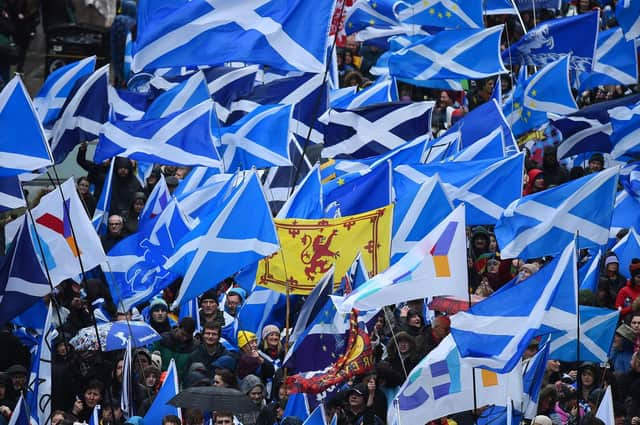Analysis: SNP stuck in a no-win situation with independence strategy


It is convenient and fashionable to blame Nicola Sturgeon for the mess the SNP are in strategically when it comes to independence.
But the truth is that this was a problem before the inevitable result of the Supreme Court case on Holyrood’s powers.
Advertisement
Hide AdAdvertisement
Hide AdWe all knew it was up to Westminster, all that did was confirm it.
A de facto referendum made some degree of sense when the SNP were riding high with more than half of Scots planning to back them at a general election, and with independence support touching heights of 58 per cent.
But with the SNP’s support languishing in the thirties and Yes support just below 50 per cent, that is no longer a remotely credible option for the general election.
Humza Yousaf is therefore left with a close to impossible task.
He must simultaneously throw the red meat of imminent independence to his activists and his core support on the doorstep, while not alienating the electorate that has abandoned independence as a priority.
Back the activists who demand a fundamentalist First Minister and he likely secures his own fate, even if it does hold off some of the internal opposition and reduce division.
Follow the electorate and there will be activists who simply do not turn out at a general election and other SNP voters who, in the short-term, view a Labour government as more important than electing a pro-independence MP.
This is why the party leadership has decided to adopt a word salad of a motion, couched in vaguery and misdirection, an exemplar of meaningless political jargon combined with a dash of flamboyant rhetoric.
Advertisement
Hide AdAdvertisement
Hide AdIt has something for everything, no matter how fundamentalist or gradualist it appears at first glance.
But the party’s turn to the electorate, rather than its activists, will hinge on whether one key amendment is added to the motion.
It calls for the SNP manifesto to explicitly link independence with the cost of living crisis, to demand additional powers for Holyrood to tackle it, and to push the independence question to 2026.
This would provide time to rebuild support for independence to 60 per cent, which is where most sensible SNP politicians believe it needs to be and where the public want it to be before another referendum is granted.
This should be a comfortable compromise for the leadership, but whether the same holds true for his party or the electorate remains to be seen.
Comments
Want to join the conversation? Please or to comment on this article.
